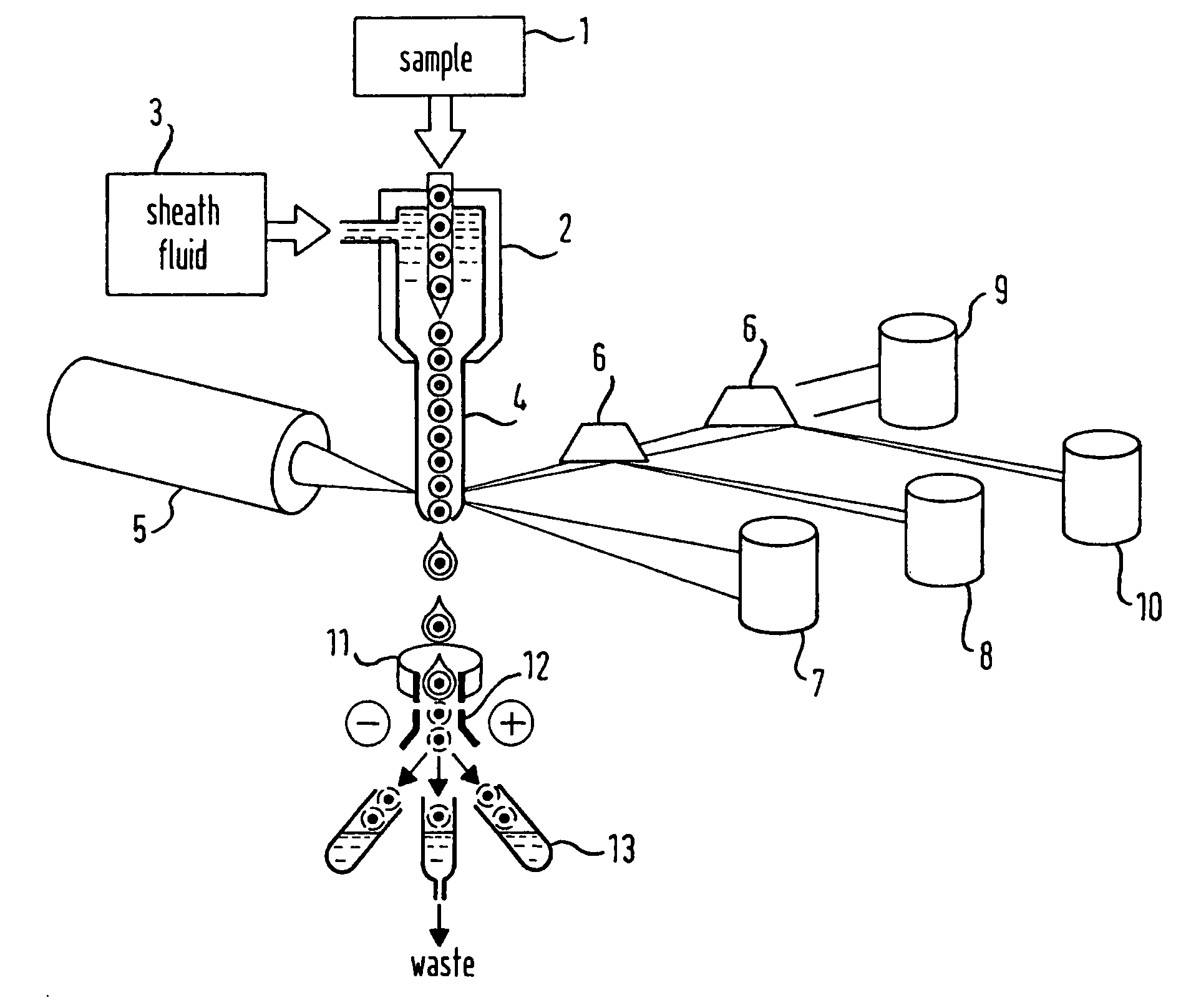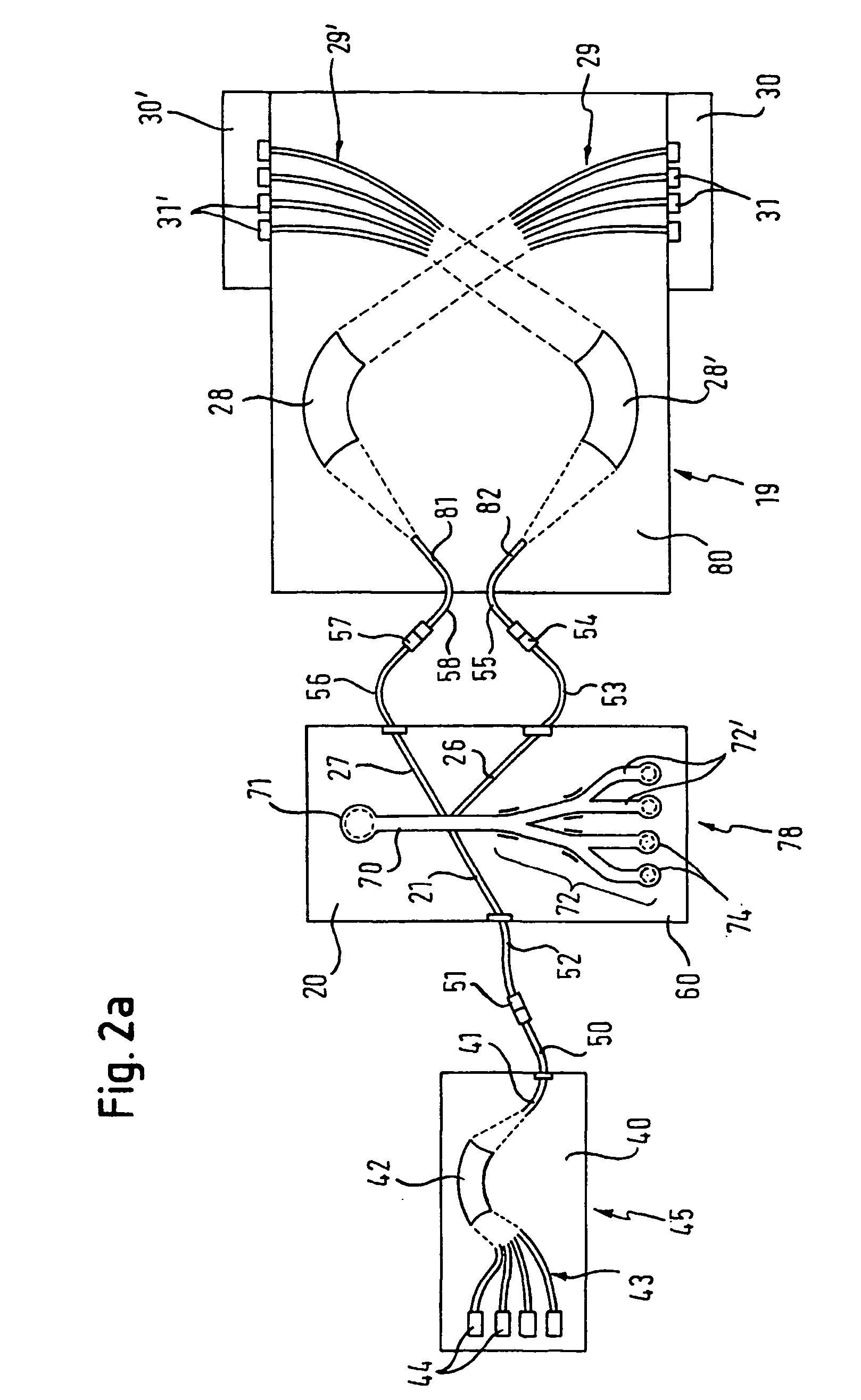Device and method for investigating analytes in liquid suspension or solution
a liquid suspension and analyte technology, applied in the field of devices and methods for investigating analytes in liquid suspension or solution, can solve the problems of limiting the number of fluorescent wavelengths that are typically used in commercial applications today, bulky and expensive, and limiting their broad use in research and clinical practice, so as to achieve easy adaptation to different investigations and expand the possibilities of application
- Summary
- Abstract
- Description
- Claims
- Application Information
AI Technical Summary
Benefits of technology
Problems solved by technology
Method used
Image
Examples
Embodiment Construction
[0072] In FIG. 2a an embodiment of an optical detection device according to the present invention is shown, which comprises a light supplying means 45 integrated on a planar substrate device 40, an analyte handling means 78 integrated on a planar substrate device 20, a light directing means 19 integrated on a planar substrate device 80, and detection means integrated on planar substrate devices 30, 30′. Also shown is a plurality of optical waveguides, which are integrated in the substrate devices and are designed to direct light emitted by the light supplying means 45 through the different sections of the optical detection device to the detection means. In the analyte handling means 78 there is shown an analyte channel 70 for the liquid flow of the analyte suspension or solution and an analyte sorting means 72 comprising several sorting channels 72′ for different properties of the analytes.
[0073] The planar substrate devices 20, 40, 80 may for example be a silica or silica on silic...
PUM
| Property | Measurement | Unit |
|---|---|---|
| angle | aaaaa | aaaaa |
| angle | aaaaa | aaaaa |
| angle | aaaaa | aaaaa |
Abstract
Description
Claims
Application Information
 Login to View More
Login to View More - R&D
- Intellectual Property
- Life Sciences
- Materials
- Tech Scout
- Unparalleled Data Quality
- Higher Quality Content
- 60% Fewer Hallucinations
Browse by: Latest US Patents, China's latest patents, Technical Efficacy Thesaurus, Application Domain, Technology Topic, Popular Technical Reports.
© 2025 PatSnap. All rights reserved.Legal|Privacy policy|Modern Slavery Act Transparency Statement|Sitemap|About US| Contact US: help@patsnap.com



